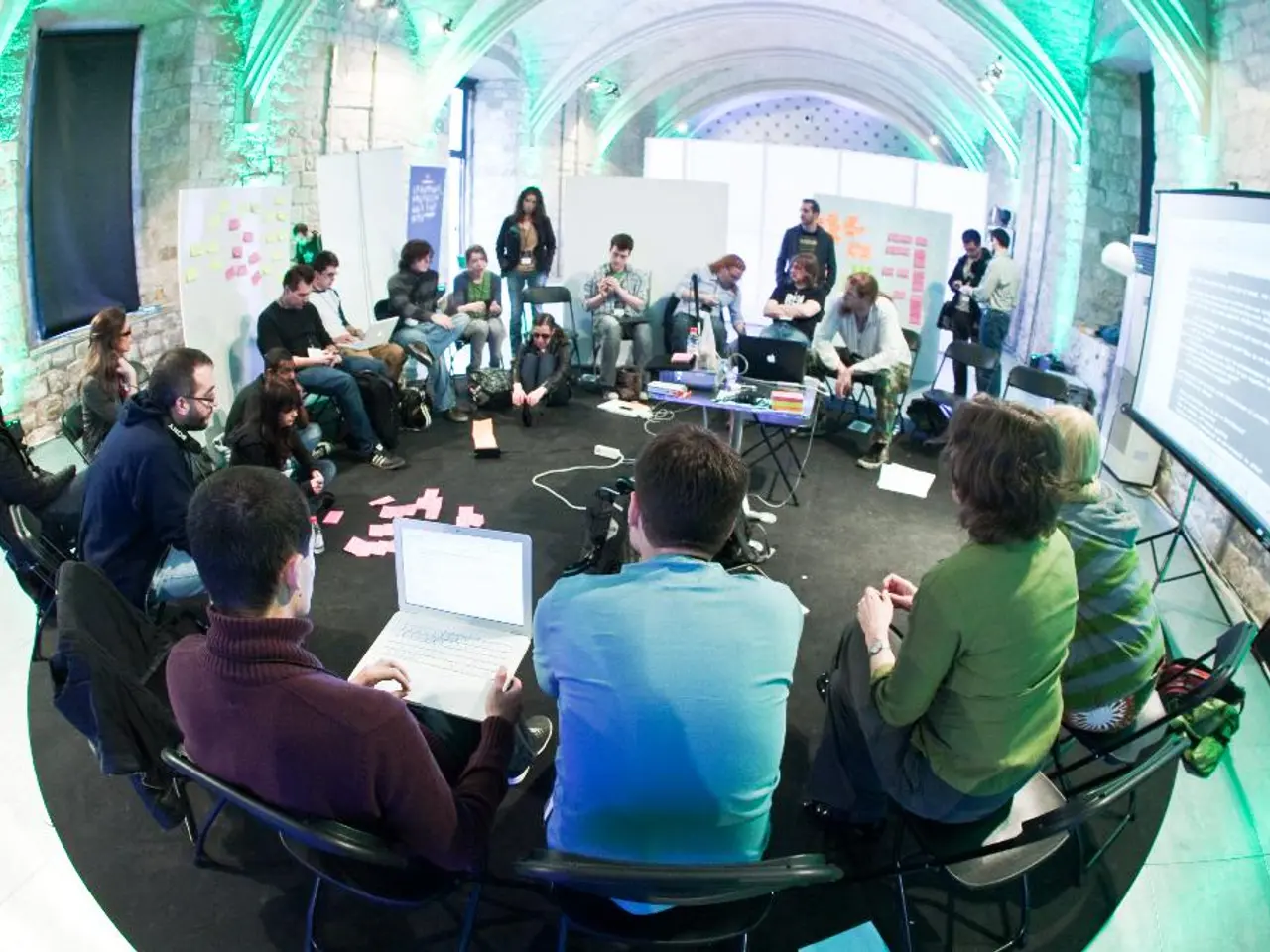Productivity-Boosting Habits: Efficient Methods to Kickstart Your Tasks
In the quest for increased productivity, understanding motivation plays a pivotal role. Motivation, a complex interplay of psychological factors, drives action and is influenced by theories such as Maslow's Hierarchy of Needs and Self-Determination Theory.
Motivation rituals, unique to each individual, can help establish a mental state conducive to task initiation. These rituals, when adapted to changing needs, remain relevant and effective. They are designed to focus on personal rituals, routine, and consistency, ultimately helping us transition smoothly into work mode.
Motivation can be intrinsically driven by internal satisfaction or personal interest in an activity, or extrinsically motivated by external factors. To create personal motivation rituals, consider activities that inspire or calm you. Documenting these rituals in a specific order or format can strengthen their impact.
Effective strategies for creating and implementing motivation rituals include setting clear, achievable goals, using habit stacking and transition signals, gamifying the rituals, creating a distraction-free environment, celebrating small wins and tracking progress, incorporating positive, energizing rituals, applying the "2-minute rule" and interest-based scheduling, allowing flexibility and relaxation, and reflecting on their effectiveness.
- Set Clear, Achievable Goals Defining what you want to accomplish explicitly and breaking tasks into manageable steps helps maintain focus and motivation.
- Use Habit Stacking and Transition Signals Link new motivation rituals to existing habits, or use simple cues to signal the start of a task. These transition signals create positive associations and reduce resistance to beginning tasks.
- Make the Rituals Obvious, Easy, and Enjoyable (Gamification) Simplify the process with templates or checklists, pair the ritual with enjoyable activities, and introduce game elements to increase engagement and persistence.
- Create a Dedicated, Distraction-Free Environment Organize a workspace with minimal distractions, ergonomic furniture, and proper lighting. Keep only task-related items accessible and remove unrelated gadgets or toys.
- Celebrate Small Wins and Track Progress Reinforce motivation by acknowledging accomplishments and using habit trackers or apps to monitor consistency and progress regularly.
- Incorporate Positive, Energizing Rituals Bring positive energy into the ritual through activities that inspire or uplift, such as gratitude practices or energizing speakers.
- Apply the “2-Minute Rule” and Interest-Based Scheduling For difficult task initiation, commit to working on the task for just two minutes to overcome inertia. Also, schedule tasks aligned with your interests or natural energy peaks to boost motivation.
- Allow Flexibility and Relaxation Maintain a relaxed atmosphere during rituals to avoid stress. Allow for some flexibility in timing or structure so the ritual remains a positive experience rather than a rigid obligation.
By incorporating these strategies, motivation rituals become clear, simple to start, positively reinforced, and sustainable, thereby improving task initiation and overall productivity. Regularly assessing and modifying these rituals is essential for maintaining their effectiveness.
References: [1] Duhigg, C. (2012). The Power of Habit: Why We Do What We Do in Life and Business. Random House. [2] Duckworth, A. (2016). Grit: The Power of Passion and Perseverance. Scribner. [3] Csikszentmihalyi, M. (1990). Flow: The Psychology of Optimal Experience. Harper & Row. [4] Goldstein, D. G., & Gendler, T. S. (2013). A Philosophical Guide to the Mind: The Classics Explained. Oxford University Press. [5] Pink, D. H. (2009). Drive: The Surprising Truth About What Motivates Us. Riverhead Books.
Women seeking increased productivity can benefit from the implementation of motivation rituals. These rituals, based on understanding the complexities of motivation, help establish a mindset conducive to productivity. Women can set clear, achievable goals for their rituals, incorporating habit stacking and transition signals to make them easy to start. By gamifying the rituals, women can find them enjoyable, and tracking their progress can further reinforce motivation.
Creating a dedicated, distraction-free environment is essential for these rituals' effectiveness. Women can celebrate small wins and incorporate positive, energizing activities to maintain focus and motivation. Applied strategies from education-and-self-development resources, such as the "2-minute rule" and interest-based scheduling, enable women to overcome inertia and boost productivity.
When adapting motivation rituals to changing needs, women can seek support to ensure their personal-growth journey remains productive. Regular assessment and modification of these rituals can ensure their ongoing effectiveness. Executive function skills and consistent routines can help women manage their habits more efficiently, ultimately leading to increased productivity.




